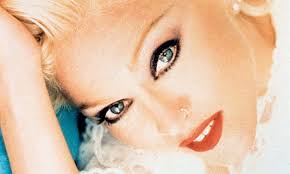
Madonna, the Queen of Pop, has never shied away from controversy. Throughout her career, she has consistently challenged social norms, pushed boundaries, and used her platform to discuss themes of sexuality, power, and self-expression. One of the most memorable quotes attributed to her is: “I don’t see anything pornographic about beautiful pictures of naked bodies.” This statement reflects not only her personal philosophy but also her broader approach to art, culture, and the human body. In this article, we’ll dive into the meaning behind this bold statement, exploring Madonna’s views on nudity, beauty, and sexual expression, as well as how they fit into her long history of challenging societal taboos.
The Context of the Quote
Madonna’s remark came during a period when the pop star was already well-known for pushing the limits of decency, particularly in terms of her use of nudity and sexual themes in her music, performances, and public life. Throughout the 1980s and 1990s, Madonna was often at the center of debates about the boundaries of acceptable artistic expression. She became famous not only for her hit songs and ever-evolving fashion sense but also for her ability to ignite controversy.
One of the key moments in her career that involved nudity and sexual expression was the release of her 1992 coffee table book “Sex.” The book, which featured explicit photographs of Madonna and other models, caused an uproar and sparked widespread media attention. Critics accused her of using pornography for shock value, while others celebrated the book as a feminist and liberating statement on female sexuality.
In light of this, her statement that she doesn’t see anything pornographic about beautiful pictures of naked bodies is a direct response to the polarized reactions she often faced. It’s an assertion that art, beauty, and nudity should not be automatically equated with vulgarity or obscenity.
Art, Nudity, and Beauty: A Broader Cultural Debate
Madonna’s comment touches on a much larger cultural discussion about the nature of art and the human body. From classical sculptures to modern photography, the human body has been a subject of artistic exploration for centuries. Michelangelo’s David, Botticelli’s The Birth of Venus, and the works of countless other artists have celebrated the beauty of the human form in all its vulnerability and power.
In many ways, Madonna’s statement is a call to return to this artistic tradition, where nudity is not automatically seen as “dirty” or “pornographic.” Instead, she is advocating for the recognition of the body as a thing of beauty, deserving of artistic exploration and appreciation. For her, nudity is not inherently sexual or obscene. Rather, it is a natural part of being human, one that can be celebrated in ways that are both tasteful and empowering.
Her perspective aligns with the views of many contemporary artists and thinkers who see nudity as a form of self-expression. By stripping away the layers of societal expectations, nudity can reveal the raw, unfiltered truth of the human experience—whether that truth is vulnerability, strength, or freedom.
Sexuality, Empowerment, and Feminism
Throughout her career, Madonna has positioned herself as a feminist icon—though not always in ways that align with traditional feminist movements. Her brand of feminism is complex, layered with elements of personal empowerment, sexual freedom, and the rejection of restrictive gender norms. Her views on nudity and sexuality are integral to this philosophy.
By advocating for the acceptance of beautiful, nude images, Madonna is not just defending artistic freedom; she’s also making a statement about female autonomy and empowerment. In a world where women’s bodies have often been objectified, controlled, or shamed, Madonna’s approach is a radical act of self-definition. She chooses to control her image and her sexuality, not as a way to please others, but as a declaration of independence and agency.
In her view, sexual expression, whether through music, photography, or performance, is not something to be ashamed of. Instead, it is a tool for empowerment. For Madonna, embracing her sexuality—through nudity or otherwise—is a way to claim ownership over her own body and her own narrative.
Her Sex book, which featured explicit photos of her in various sexual scenarios, was not just about shock value. It was an exploration of sexual freedom, both for herself and for the women she represented. In the preface of the book, Madonna herself wrote, “This book is about sex as a means of self-expression and about the empowerment that comes with being in control of one’s sexuality.” By reclaiming her sexual identity in a public, unapologetic way, she challenged the societal notion that women should remain passive or demure in matters of sex.
The Double Standard: Madonna vs. Society
One of the central tensions in Madonna’s long career has been the double standard faced by women in the public eye. When male artists or actors appear nude or sexually provocative, it is often seen as part of their “artistic expression.” However, when women do the same, the reaction is frequently harsher, with accusations of immorality, vulgarity, or promiscuity.
Madonna’s willingness to expose herself—both literally and figuratively—through her art has often put her in direct opposition to societal norms. She has been labeled everything from a “slut” to a “savior of feminism,” depending on who is doing the labeling. But for Madonna, the ability to express herself freely—whether through music, fashion, or nudity—is an act of rebellion against those who would seek to restrict women’s autonomy.
Her quote about nudity is part of this ongoing battle against the way women are often scrutinized for their bodies. For Madonna, embracing her body and sexuality is not about fulfilling a male fantasy but about asserting her own agency. She encourages other women to do the same, advocating for sexual freedom and self-acceptance.
The Evolution of Madonna’s Relationship with Nudity
Madonna’s relationship with nudity and sexuality has evolved over the decades. In the early years of her career, she often used provocative imagery in her music videos, performances, and public appearances to draw attention and challenge conventional views of femininity and sexuality. Her infamous Like a Virgin performance at the 1984 MTV Video Music Awards, where she rolled around on the floor in a wedding dress, is a prime example of how she used sexuality as a tool for self-expression and public provocation.
However, as she matured both personally and artistically, Madonna’s approach to nudity became more nuanced. In the 2000s, as she embraced a more spiritual and philosophical approach to life, her use of nudity shifted. Her later albums, such as Confessions on a Dance Floor (2005) and MDNA (2012), moved away from overtly sexual themes, focusing more on personal transformation, faith, and social issues. Despite this, Madonna’s early exploration of sexual freedom continues to inform her identity as an artist.
She has also become a vocal advocate for body positivity, encouraging people—especially women—of all shapes and sizes to embrace their bodies. This message became even more apparent on her Instagram account, where she frequently posts images that challenge beauty standards and celebrate the human form in all its variety.
The Legacy of Madonna’s Philosophy on Nudity
Madonna’s belief that there is nothing inherently pornographic about beautiful pictures of naked bodies has left a lasting impact on the entertainment industry, art, and popular culture. Her advocacy for freedom of expression and her challenge to the notion that nudity is automatically sexual has paved the way for other artists to explore similar themes.
From visual artists to musicians, many have been inspired by Madonna’s unapologetic approach to sexuality and nudity. Her influence can be seen in the works of artists like Lady Gaga, who has used her own public image to challenge societal norms around beauty, gender, and sexuality, and Beyoncé, whose empowerment anthems often center around themes of sexual autonomy and self-expression.
Madonna’s work continues to inspire new generations of artists and activists to reject shame and embrace freedom of expression. Her legacy is one of empowerment, encouraging everyone—regardless of gender or sexual orientation—to see their bodies not as objects of shame, but as beautiful and worthy of celebration.
Conclusion
Madonna’s assertion that she does not see anything pornographic about beautiful pictures of naked bodies is more than just a comment on nudity; it is a reflection of her broader philosophy on art, sexuality, and empowerment. For her, nudity is not about shock value, but about celebrating the beauty and complexity of the human form. She rejects the idea that the body, especially the female body, should be hidden, shamed, or controlled. Instead, she advocates for the freedom to express oneself fully, both artistically and sexually.
In a world that continues to debate the lines between art and obscenity, Madonna’s message remains clear: the human body is a beautiful, natural, and powerful thing, deserving of both admiration and respect. For Madonna, there is no shame in being naked—only in denying oneself the freedom to be who they truly are.






